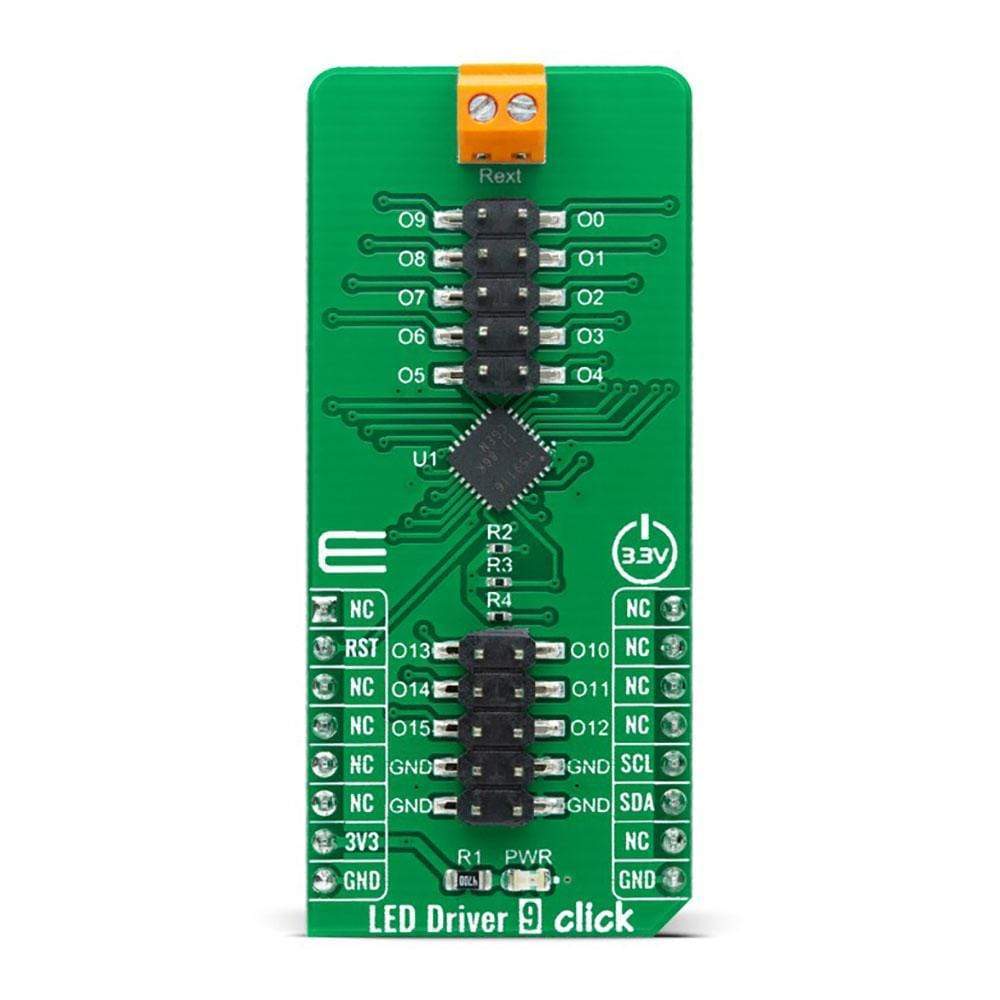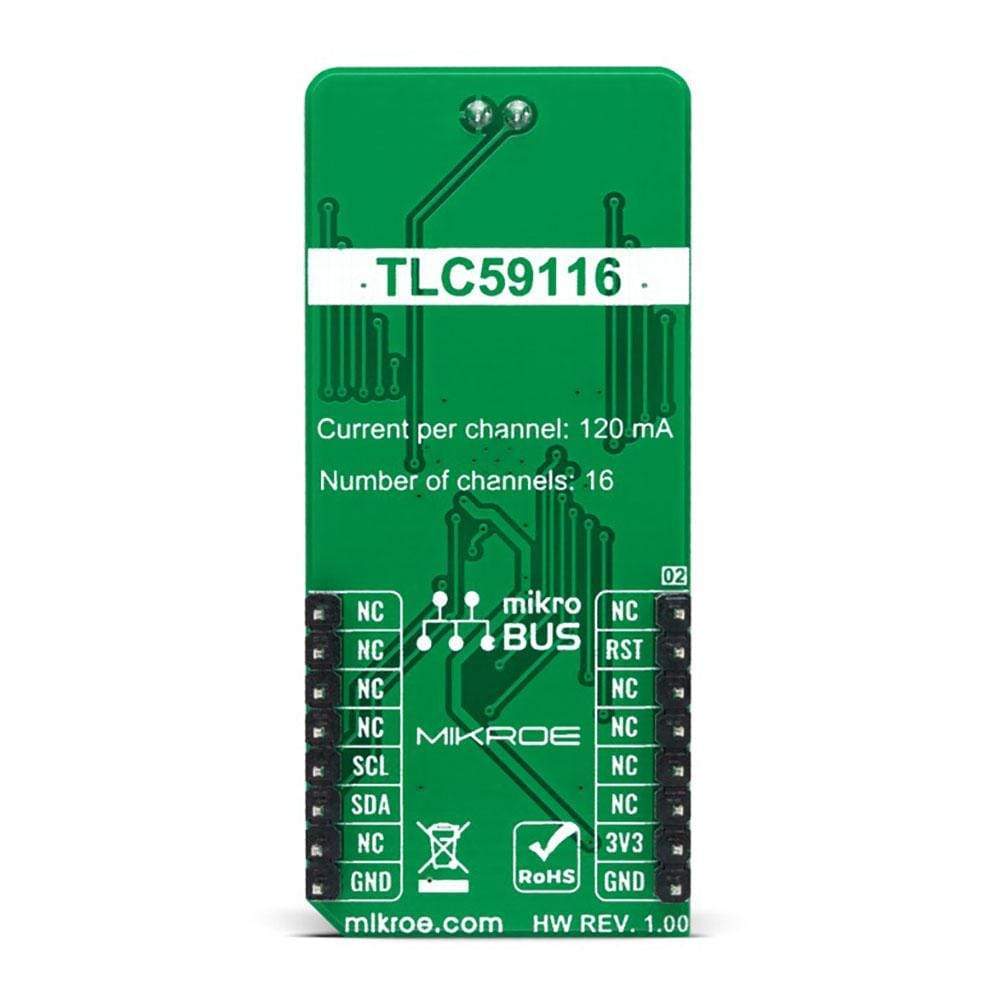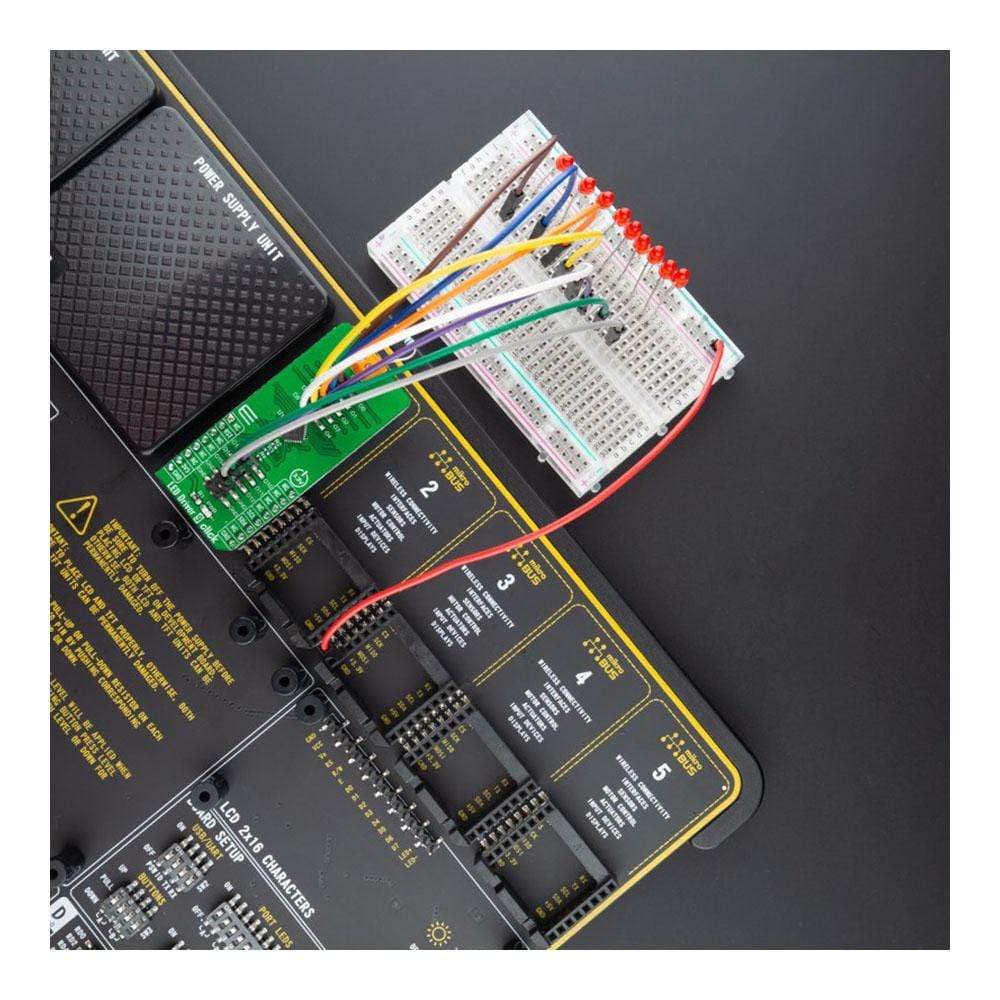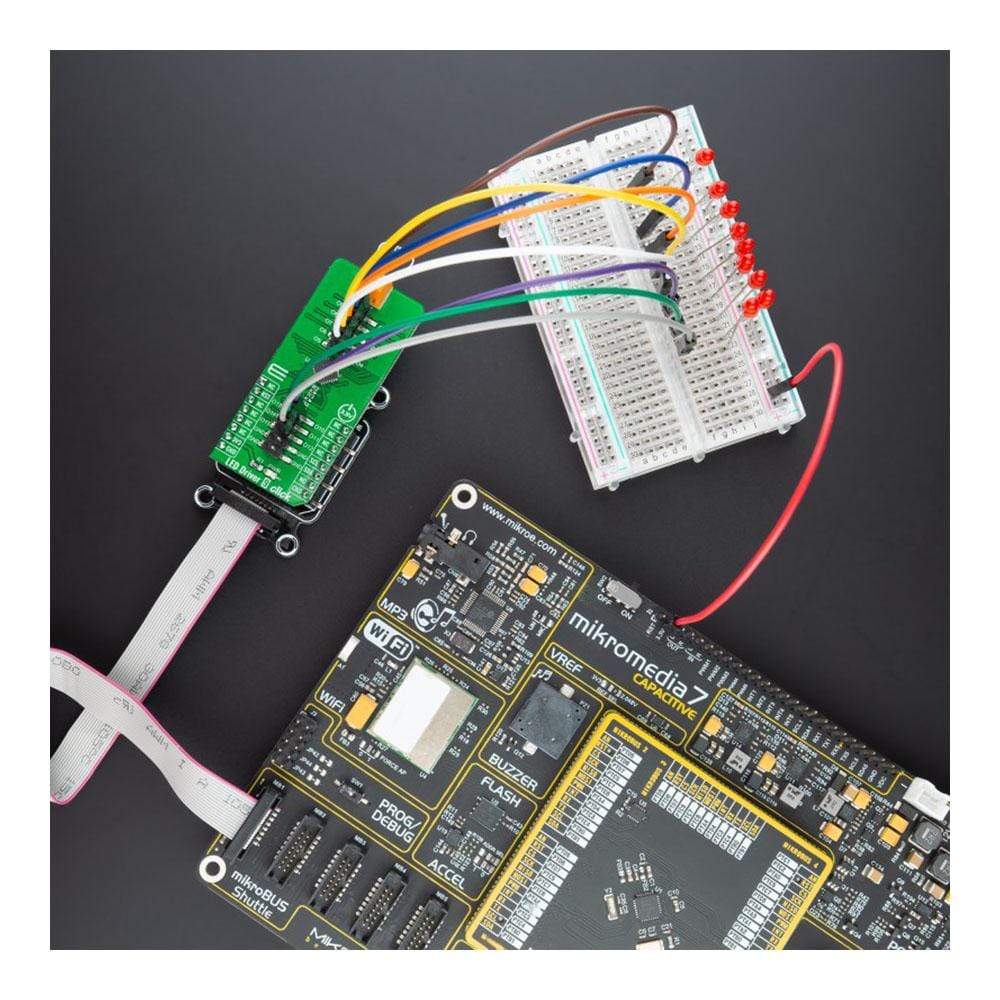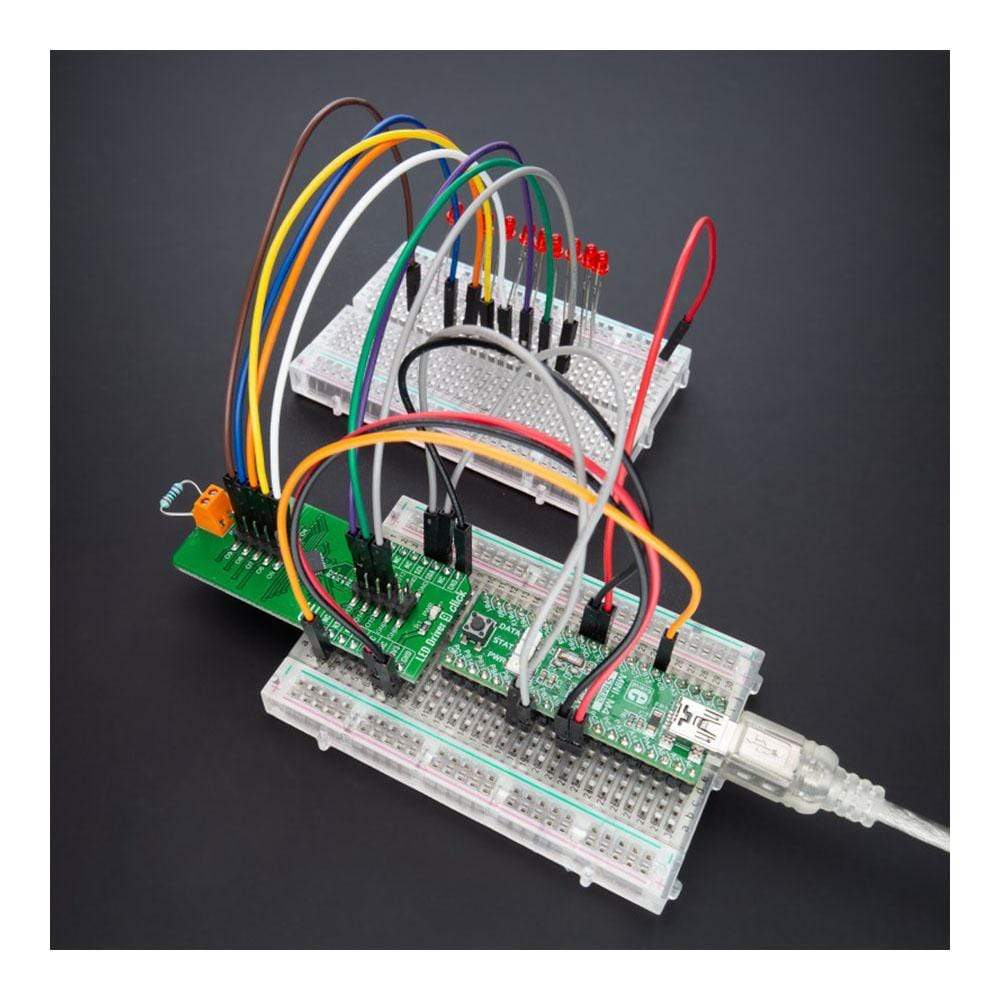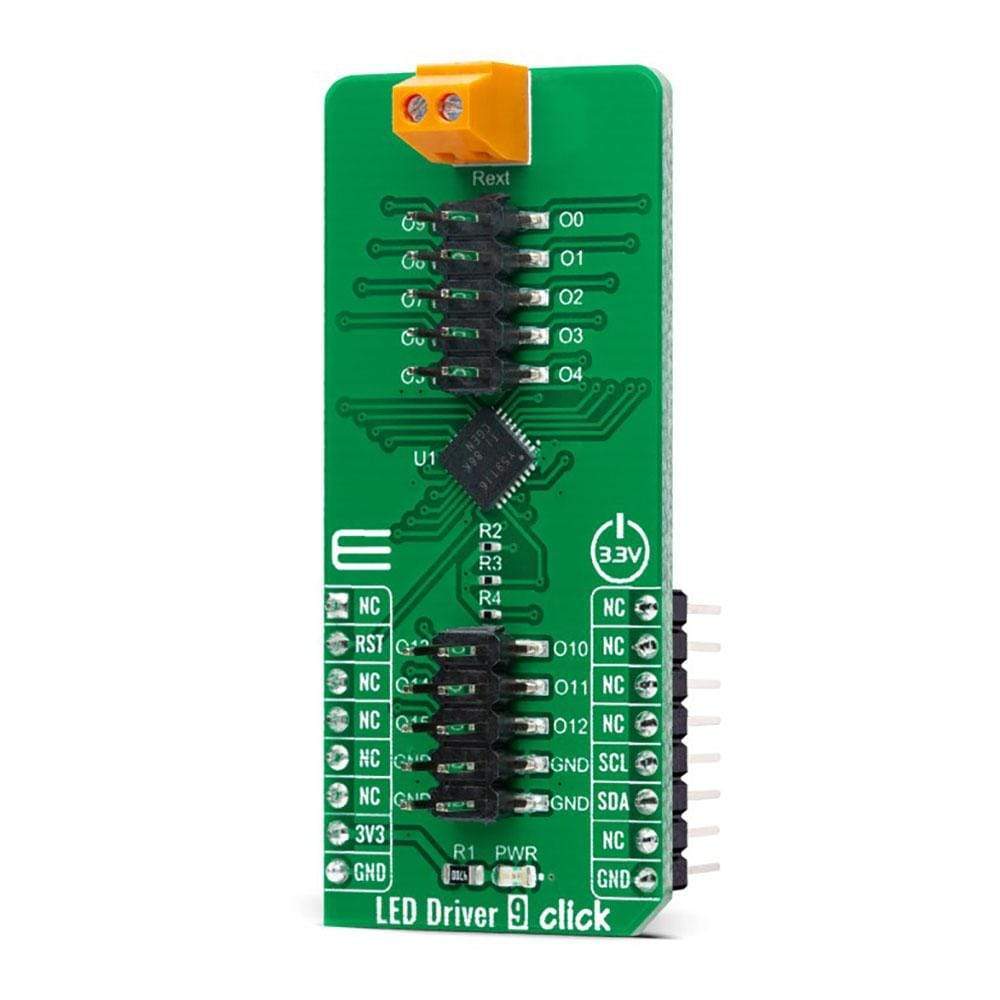
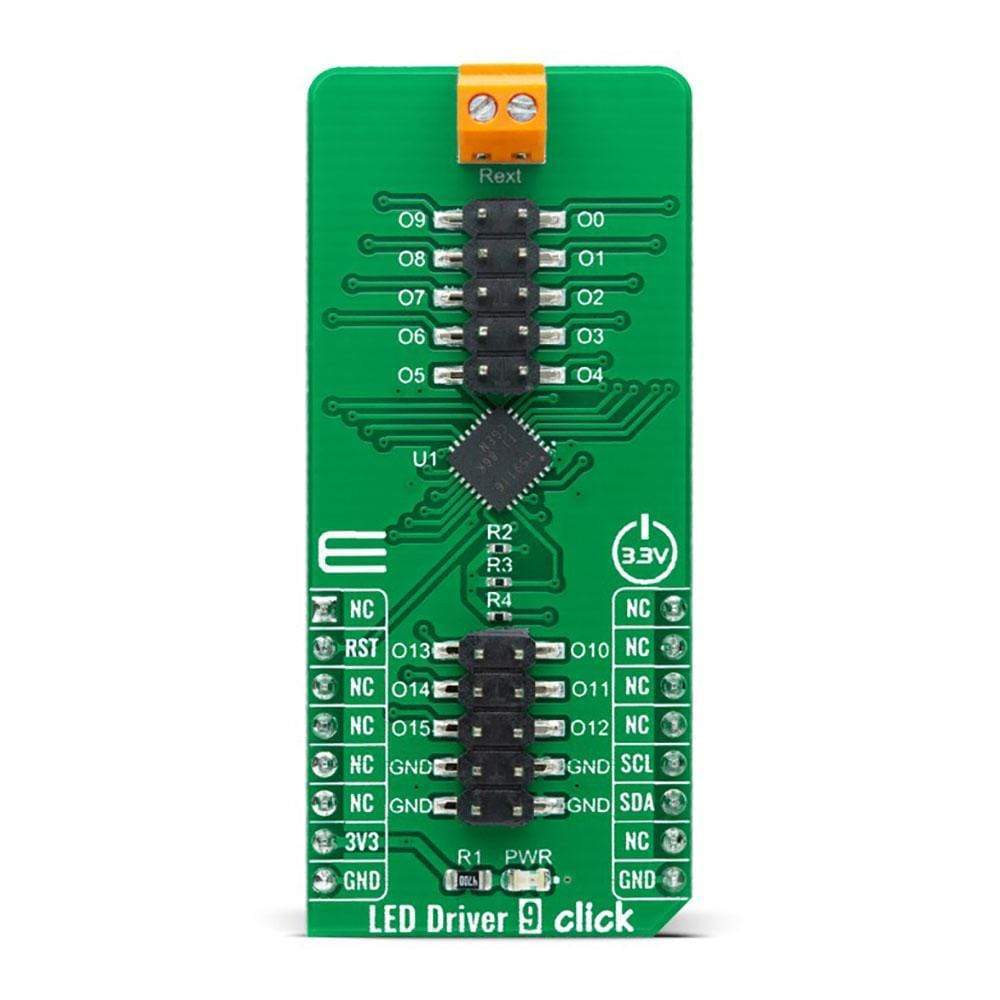
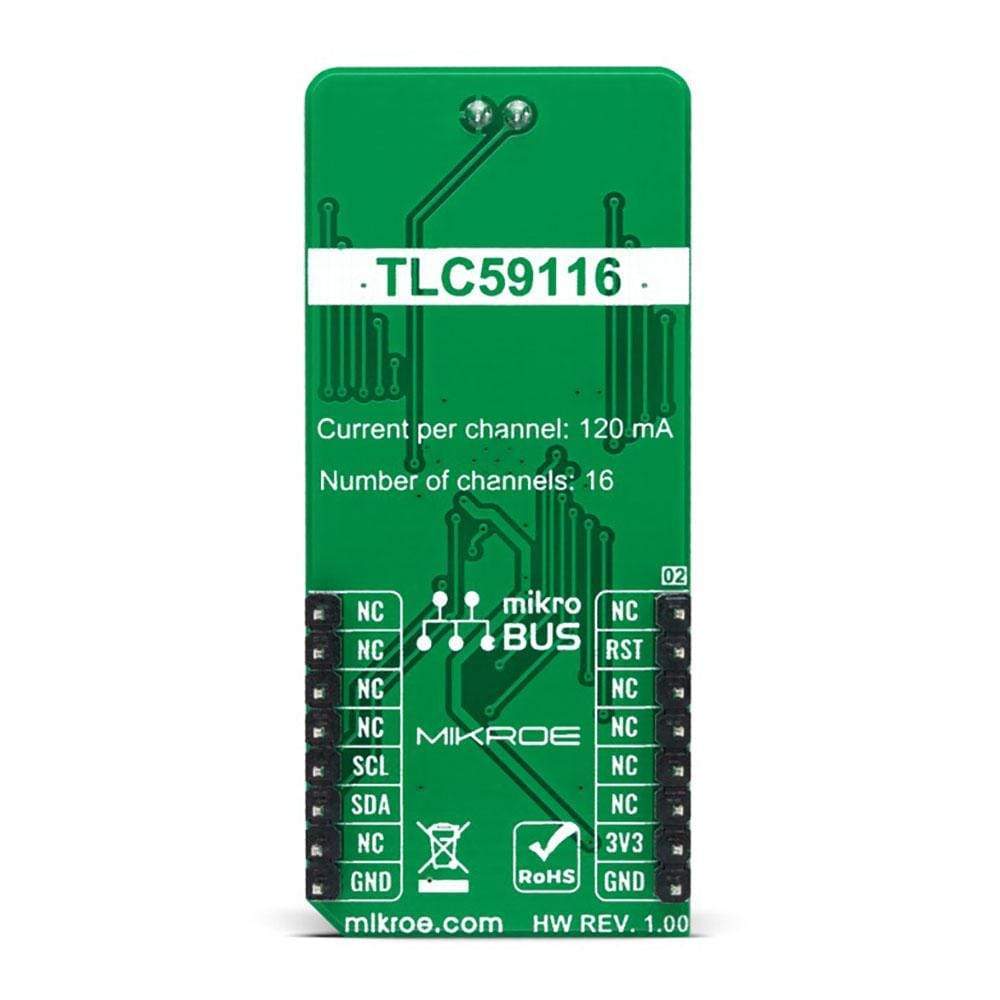
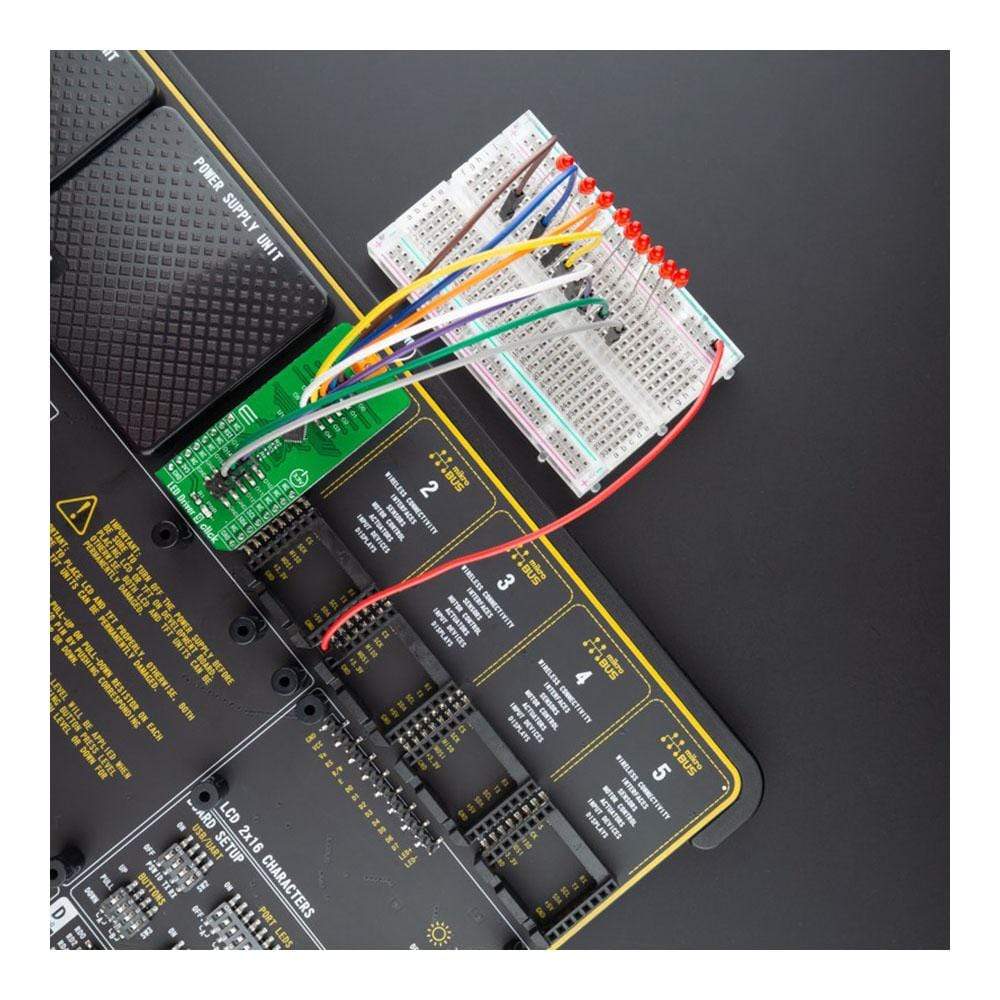
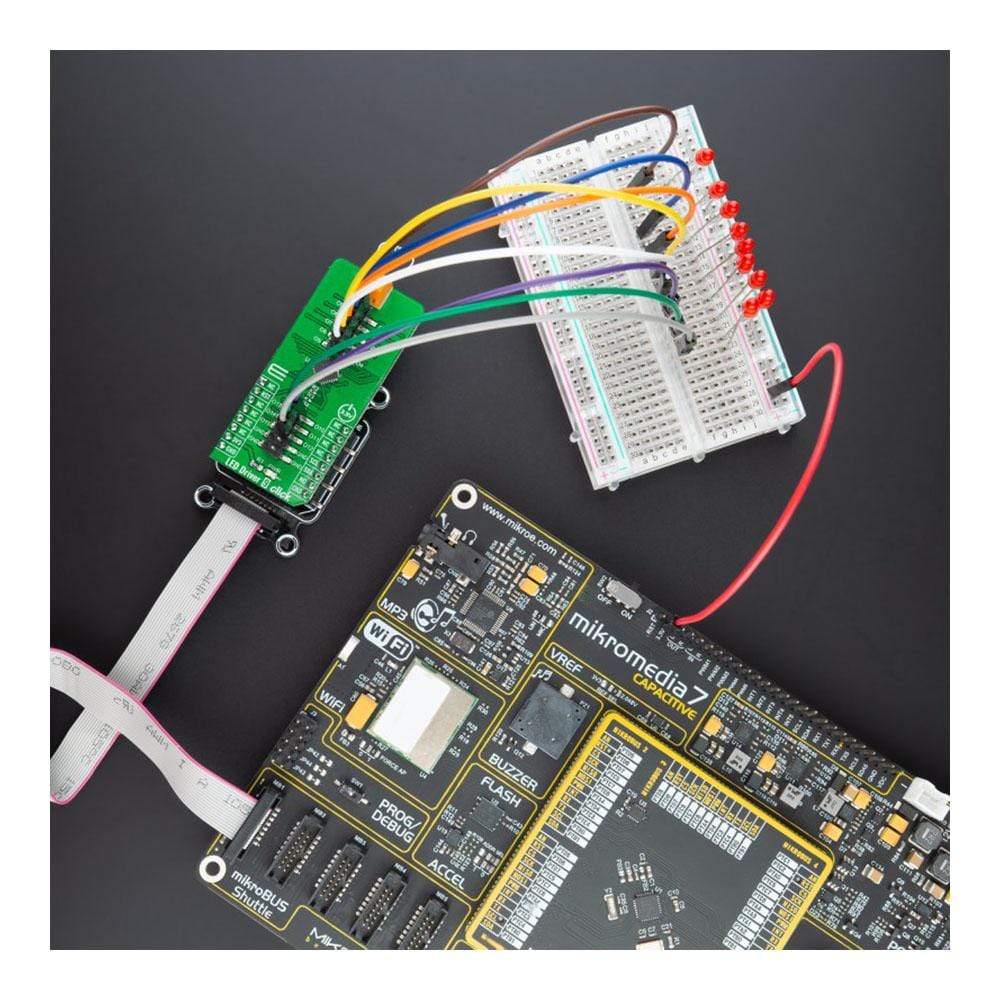

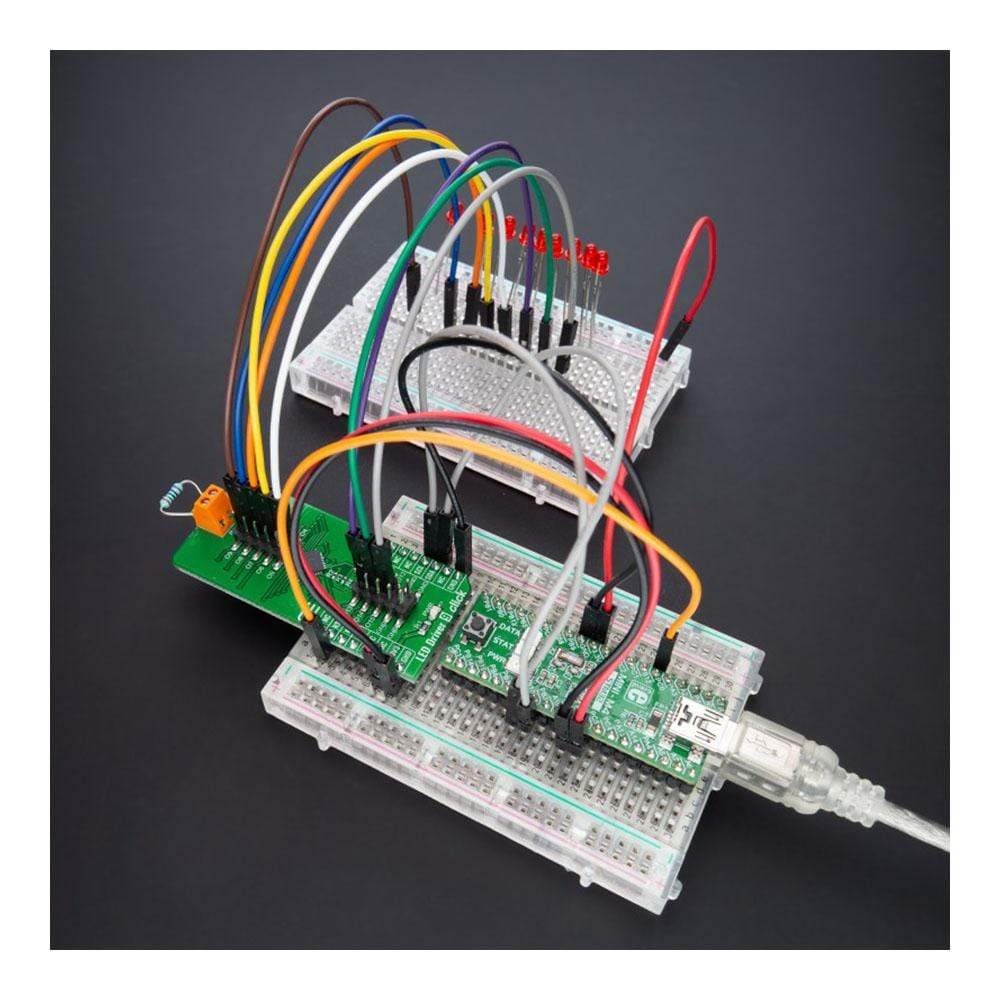
Key Features
Overview
The LED Driver 9 Click Board™ is a compact add-on board that simplifies the control of multiple LEDs. This board features the TLC59116, I2C bus-controlled 16-channel LED driver optimized for red/green/blue/amber (RGBA) colour mixing and backlight application from Texas Instruments. Each 16-channel LED output has its 8-bit resolution (256 steps), fixed-frequency, individual PWM controller that operates at 97 kHz, with a duty cycle that is adjustable from 0% to 99.6%. The PWM controller allows each LED to be set to a specific brightness value and dims or blinks all LEDs with the same value. This Click Board™ is suitable for RGBA colour mixing and backlight application for amusement products, LED status signalization, home automation projects, industrial equipment, and many more.
The LED Driver 9 Click Board™ is supported by a mikroSDK compliant library, which includes functions that simplify software development. This Click Board™ comes as a fully tested product, ready to be used on a system equipped with the mikroBUS™ socket.
Downloads
Der LED Driver 9 Click Board™ ist eine kompakte Zusatzplatine, die die Steuerung mehrerer LEDs vereinfacht. Diese Platine verfügt über den TLC59116, einen I2C-busgesteuerten 16-Kanal-LED-Treiber, der für die Farbmischung Rot/Grün/Blau/Gelb (RGBA) und Hintergrundbeleuchtungsanwendungen von Texas Instruments optimiert ist. Jeder 16-Kanal-LED-Ausgang hat eine 8-Bit-Auflösung (256 Schritte), eine Festfrequenz, einen individuellen PWM-Controller, der mit 97 kHz arbeitet, mit einem von 0 % bis 99,6 % einstellbaren Arbeitszyklus. Der PWM-Controller ermöglicht die Einstellung jeder LED auf einen bestimmten Helligkeitswert und dimmt oder blinkt alle LEDs mit demselben Wert. Dieses Click Board™ eignet sich für die RGBA-Farbmischung und Hintergrundbeleuchtungsanwendungen für Unterhaltungsprodukte, LED-Statussignalisierung, Heimautomatisierungsprojekte, Industrieanlagen und vieles mehr.
Der LED-Treiber 9 Click Board™ wird durch eine mikroSDK-kompatible Bibliothek unterstützt, die Funktionen enthält, die die Softwareentwicklung vereinfachen. Dieses Click Board™ wird als vollständig getestetes Produkt geliefert und ist bereit für den Einsatz auf einem System, das mit der mikroBUS™-Buchse ausgestattet ist.
| General Information | |
|---|---|
Part Number (SKU) |
MIKROE-4595
|
Manufacturer |
|
| Physical and Mechanical | |
Weight |
0.02 kg
|
| Other | |
Country of Origin |
|
HS Code Customs Tariff code
|
|
EAN |
8606027382550
|
Warranty |
|
Frequently Asked Questions
Have a Question?
Be the first to ask a question about this.


